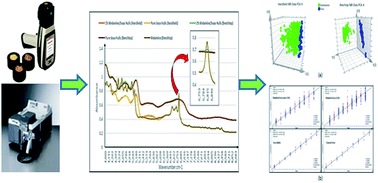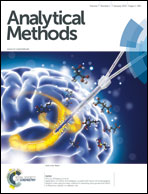The use of handheld near-infrared reflectance spectroscopy (NIRS) for the proximate analysis of poultry feed and to detect melamine adulteration of soya bean meal
Abstract
The use of handheld near infrared (NIR) instrumentation, as a tool for rapid analysis, has the potential to be used widely in the animal feed sector. A comparison was made between handheld NIR and benchtop instruments in terms of proximate analysis of poultry feed using off-the-shelf calibration models and including statistical analysis. Additionally, melamine adulterated soya bean products were used to develop qualitative and quantitative calibration models from the NIRS spectral data with excellent calibration models and prediction statistics obtained. With regards to the quantitative approach, the coefficients of determination (R2) were found to be 0.94–0.99 with the corresponding values for the root mean square error of calibration and prediction were found to be 0.081–0.215% and 0.095–0.288% respectively. In addition, cross validation was used to further validate the models with the root mean square error of cross validation found to be 0.101–0.212%. Furthermore, by adopting a qualitative approach with the spectral data and applying principal component analysis, it was possible to discriminate between adulterated and pure samples.


 Please wait while we load your content...
Please wait while we load your content...